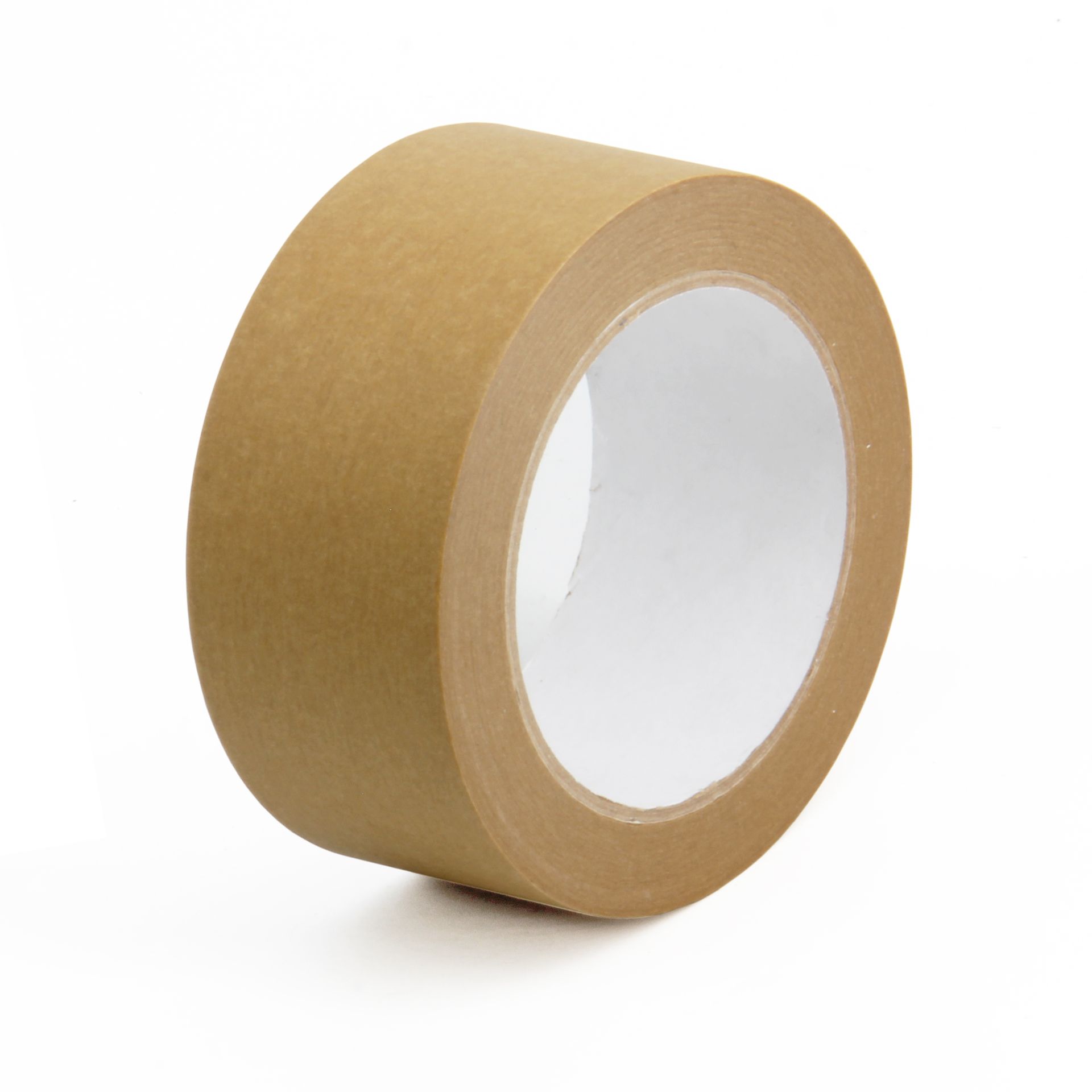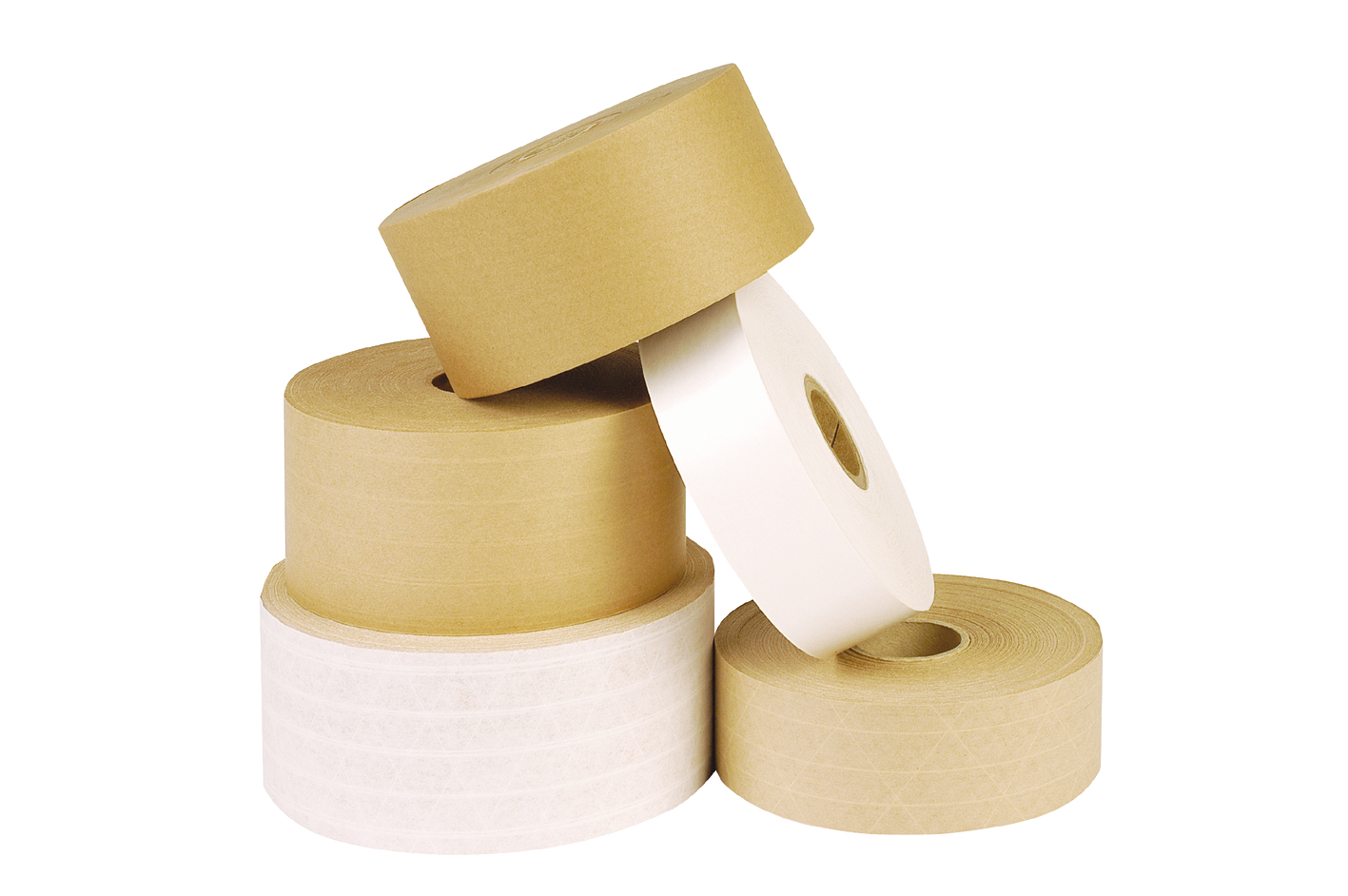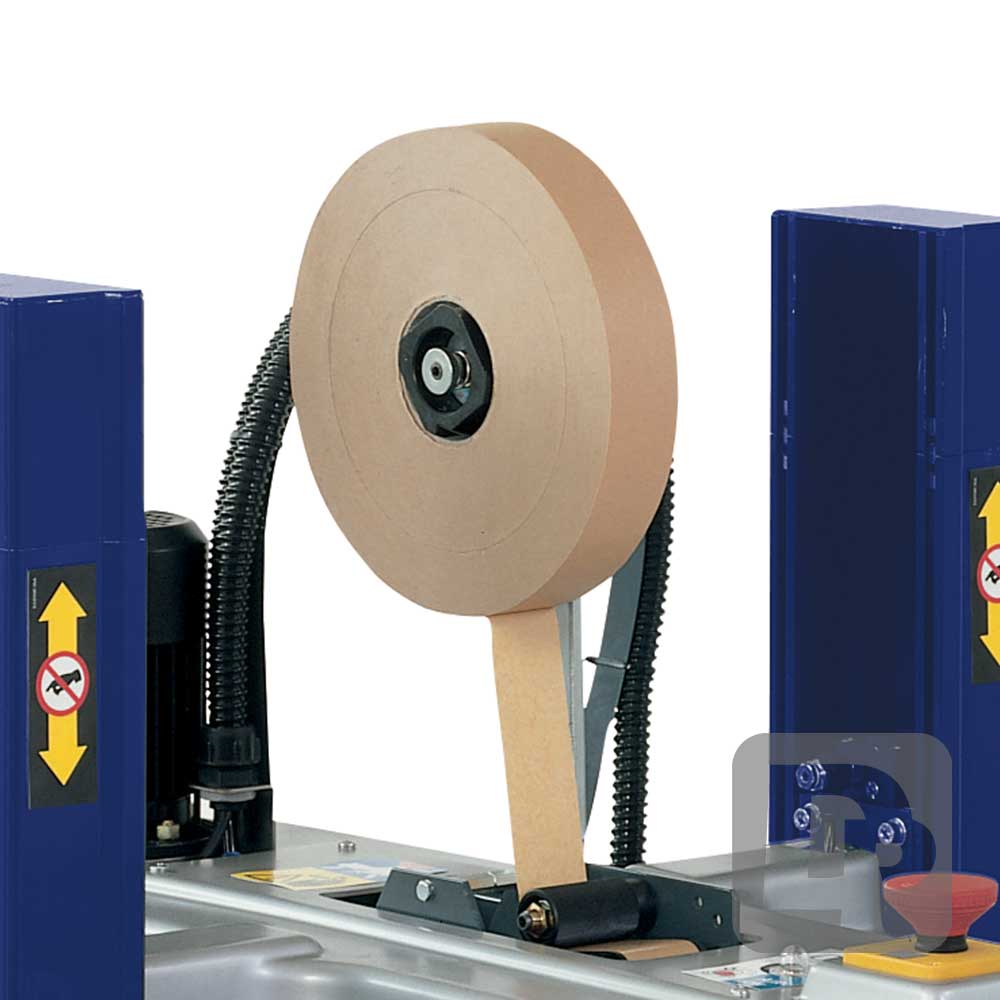Introduction to Paper Packing Tape
Paper packing tape, also known as kraft tape or paper tape, is an adhesive tape made primarily from paper. It's a versatile and eco-friendly alternative to traditional plastic-based packing tapes, offering several benefits for both commercial and personal use.
What is Paper Packing Tape?
Paper packing tape is crafted from a strong, durable paper material, often reinforced with natural or synthetic fibers to enhance its strength and tear resistance. The adhesive used on paper packing tape is typically water-activated (gummed) or pressure-sensitive, providing a secure bond once applied to a surface.
How Does Paper Tape Differ from Other Types of Packing Tape?
Unlike plastic packing tapes, which are made from materials like polypropylene or PVC, paper packing tape is made from renewable resources and is biodegradable. This makes it an environmentally friendly choice for packaging and shipping needs. Here are a few key differences:
- Material: Paper packing tape is made from kraft paper, a natural and biodegradable material, whereas plastic tapes are derived from non-renewable petroleum-based products.
- Adhesive: The adhesive on paper packing tape can be water-activated, creating a very strong bond once applied. Plastic tapes typically use pressure-sensitive adhesives.
- Environmental Impact: Paper packing tape is compostable and recyclable, significantly reducing its environmental footprint compared to plastic tapes, which contribute to plastic waste and pollution.
Why Choose Paper Packing Tape?
Choosing paper packing tape offers several advantages:
- Eco-Friendly: As mentioned, paper packing tape is biodegradable and recyclable, making it a more sustainable choice for environmentally conscious individuals and businesses.
- Strong Bond: The adhesive used on paper packing tape, particularly the water-activated variety, creates a strong and tamper-evident seal, which is ideal for securing packages during shipping.
- Versatility: Paper packing tape can be used for a variety of applications beyond just packaging, including arts and crafts, labeling, and even decorating.
- Aesthetic Appeal: The natural kraft appearance of paper packing tape provides a rustic, professional look that is often preferred for branding and presentation.
In the following sections, we will delve deeper into the various types and practical uses, along with tips on how to use it effectively and its advantages over other packing materials. Whether you’re looking to reduce your environmental impact or seeking a reliable and strong packaging solution, paper packing tape is a compelling choice worth considering.
 Types of Paper Packing Tape
Types of Paper Packing Tape
Paper packing tape comes in several varieties, each designed to meet specific needs and applications. Understanding the differences between these types can help you choose the right tape for your packing, shipping, or crafting projects.
1. Reinforced Paper Packing Tape
Description: Reinforced paper packing tape is made from kraft paper that is embedded with fiberglass or other synthetic fibers. This reinforcement significantly increases the tape’s strength and tear resistance.
Uses:
- Ideal for sealing heavy or bulky packages.
- Commonly used in industrial and commercial shipping where durability is crucial.
- Provides extra security for packages that might be subjected to rough handling.
Benefits:
- High tensile strength.
- Resistant to splitting or tearing.
- Tamper-evident, enhancing security during shipping.
2. Non-Reinforced Paper Packing Tape
Description: Non-reinforced paper packing tape is composed solely of kraft paper with an adhesive backing. It lacks the added fibers found in reinforced versions but still provides a sturdy seal.
Uses:
- Suitable for sealing light to medium-weight packages.
- Often used for general packing and moving needs.
- Works well for recyclable and compostable packaging solutions.
Benefits:
- Easier to tear by hand, making it user-friendly.
- Eco-friendly as it is fully biodegradable.
- Cost-effective for everyday use.
 3. Gummed Paper Tape (Water-Activated)
3. Gummed Paper Tape (Water-Activated)
Description: Gummed paper tape features an adhesive that activates with water. Once moistened, the adhesive bonds strongly to the surface, creating a secure and tamper-evident seal.
Uses:
- Frequently used in e-commerce and shipping due to its strong bonding properties.
- Ideal for sealing corrugated boxes and cartons.
- Preferred for applications where security and strength are paramount.
Benefits:
- Forms a strong, permanent bond with packaging materials.
- Tamper-evident, as any attempt to open the package leaves clear evidence.
- Environmentally friendly, often made with natural adhesives and kraft paper.
4. Self-Adhesive Paper Tape (Pressure-Sensitive)
Description: Self-adhesive paper tape, also known as pressure-sensitive tape, has an adhesive coating that sticks to surfaces upon application of pressure. No water activation is needed.
Uses:
- Convenient for quick packing and sealing tasks.
- Used in a variety of applications, from office use to industrial packaging.
- Suitable for both short-term and long-term sealing needs.
Benefits:
- Easy to use and apply, requiring no additional tools or water.
- Versatile, can be used on various surfaces and for multiple purposes.
- Available in different widths and adhesive strengths to match specific requirements.
Choosing the Right Paper Packing Tape
When selecting paper packing tape, consider the following factors:
- Weight and Size of Packages: For heavy or bulky packages, reinforced or gummed paper tape is recommended for its strength and secure sealing properties. For lighter packages, non-reinforced or self-adhesive tape may suffice.
- Environmental Impact: If sustainability is a priority, opt for tapes that are fully biodegradable and made from renewable resources. Gummed and non-reinforced paper tapes are excellent choices.
- Ease of Use: If convenience and quick application are important, self-adhesive paper tape is a good option. For more secure and tamper-evident sealing, gummed paper tape is ideal.
- Cost: Consider the cost-effectiveness of each type of tape in relation to your specific needs. Non-reinforced and self-adhesive paper tapes are generally more affordable for everyday use, while reinforced and gummed tapes may offer better value for high-security applications.
By understanding the different types of paper packing tape and their specific benefits, you can make an informed choice that meets your packing needs while also aligning with your environmental goals. In the next section, we will explore the practical uses of paper packing tape and provide tips on how to use it effectively.
 Comparing Paper Tape with Other Packing Tapes
Comparing Paper Tape with Other Packing Tapes
When choosing packing tape, it’s essential to understand how paper packing tape stacks up against other types of tape. Here, we compare paper packing tape with plastic packing tape, duct tape, and masking tape, highlighting the advantages and potential drawbacks of each.
1. Paper Packing Tape vs. Plastic Packing Tape
Material:
- Paper Packing Tape: Made from kraft paper and often reinforced with natural or synthetic fibers. Biodegradable and recyclable.
- Plastic Packing Tape: Typically made from polypropylene or PVC, non-biodegradable, and less environmentally friendly.
Adhesive:
- Paper Packing Tape: Uses either water-activated (gummed) or pressure-sensitive adhesives. Water-activated tape forms a very strong bond.
- Plastic Packing Tape: Uses pressure-sensitive adhesives that adhere quickly but may not be as strong or tamper-evident as gummed paper tape.
Environmental Impact:
- Paper Packing Tape: Environmentally friendly, decomposes naturally, and can be recycled with cardboard boxes.
- Plastic Packing Tape: Contributes to plastic waste and is difficult to recycle.
Strength and Durability:
- Paper Packing Tape: Reinforced versions provide high strength and durability, suitable for heavy packages.
- Plastic Packing Tape: Generally strong and flexible but can be prone to splitting and tearing under heavy loads.
Cost:
- Paper Packing Tape: Often slightly more expensive due to its eco-friendly properties, but the cost difference is narrowing as demand increases.
- Plastic Packing Tape: Generally cheaper, but the environmental cost is higher.
2. Paper Packing Tape vs. Duct Tape
Material:
- Paper Packing Tape: Natural kraft paper, eco-friendly.
- Duct Tape: Fabric-backed, plastic-coated tape, non-biodegradable.
Adhesive:
- Paper Packing Tape: Water-activated or pressure-sensitive adhesives, strong bond, especially for gummed tape.
- Duct Tape: Pressure-sensitive adhesive, very sticky and strong but can leave residue.
Environmental Impact:
- Paper Packing Tape: Biodegradable and recyclable.
- Duct Tape: Adds to plastic waste, difficult to recycle.
Strength and Versatility:
- Paper Packing Tape: Strong for packaging and shipping, especially the reinforced type.
- Duct Tape: Extremely strong and versatile, used for heavy-duty repairs and various unconventional applications.
Cost:
- Paper Packing Tape: Reasonably priced, especially considering environmental benefits.
- Duct Tape: Usually more expensive due to its heavy-duty nature and versatility.
3. Paper Packing Tape vs. Masking Tape
Material:
- Paper Packing Tape: Thick kraft paper, reinforced or non-reinforced.
- Masking Tape: Thin paper, not typically reinforced.
Adhesive:
- Paper Packing Tape: Strong adhesive, especially in gummed versions.
- Masking Tape: Less adhesive, designed to be removable and not leave residue.
Environmental Impact:
- Paper Packing Tape: Biodegradable and recyclable.
- Masking Tape: Also biodegradable but less durable and not typically used for heavy-duty applications.
Strength and Durability:
- Paper Packing Tape: Designed for securing packages, high strength.
- Masking Tape: Lower strength, suitable for painting, labeling, and light-duty use.
Cost:
- Paper Packing Tape: Cost-effective for packaging, especially in bulk.
- Masking Tape: Generally cheaper but not suitable for heavy-duty packaging.
Advantages of Paper Packing Tape
- Eco-Friendly: Biodegradable, recyclable, and made from renewable resources.
- Strong Bond: Especially with water-activated adhesives, providing tamper-evident seals.
- Versatile: Suitable for a wide range of applications, from heavy-duty packaging to crafts and office use.
- Aesthetic: Natural kraft appearance gives packages a professional and clean look.
Potential Drawbacks
- Cost: Can be slightly more expensive than plastic tapes, although the price gap is decreasing.
- Activation: Water-activated gummed tape requires a dispenser or sponge, which can be less convenient than pressure-sensitive options.
- Durability: While reinforced versions are very strong, non-reinforced paper tape may not be suitable for extremely heavy or high-stress applications.
By comparing paper packing tape with other types of tape, it becomes clear that its eco-friendly properties and strong adhesive qualities make it a superior choice for many applications. However, understanding the specific needs of your project will help you determine the best tape to use.
A Comprehensive Guide to Paper Packing Tape